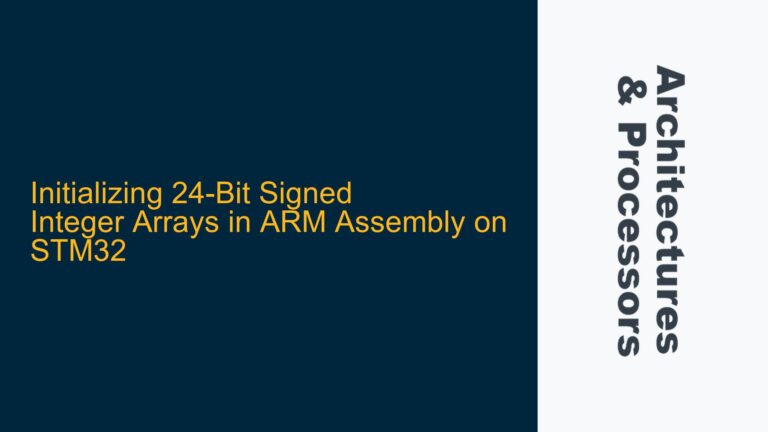NIC-400 Reset Timing Challenges in Long-Distance SoC Implementations
In complex System-on-Chip (SoC) designs utilizing ARM’s NIC-400 interconnect, one of the critical challenges is ensuring proper reset signal distribution across long physical distances. The NIC-400 interconnect, being a highly configurable network-on-chip (NoC) solution, often spans large sections of the SoC to connect multiple IP blocks, memory subsystems, and peripherals. When the reset signal is distributed across such long distances, it becomes susceptible to timing violations, signal integrity issues, and potential metastability problems. This is particularly problematic because the reset signal is a global signal that must reach all sequential elements (flip-flops) within the NIC-400 fabric simultaneously or within a well-defined timing window to ensure proper initialization of the system.
The primary issue arises from the fact that the reset signal is typically a single net that fans out to all the flip-flops within the NIC-400. In large SoCs, this fanout can be extensive, leading to significant routing delays. These delays can cause the reset signal to arrive at different flip-flops at different times, violating setup and hold times and potentially leaving some parts of the NIC-400 in an undefined state. This is exacerbated when the NIC-400 is configured with additional buffering to meet timing requirements for data and control signals, as the reset signal must also traverse these buffers.
In the context of the NIC-400, the reset signal is crucial for initializing the state machines, arbitration logic, and data paths within the interconnect. If the reset signal does not meet timing, it can lead to unpredictable behavior, such as deadlocks, data corruption, or incomplete initialization of the interconnect. This is particularly critical in multi-clock domain designs where the reset signal must be synchronized across different clock domains to avoid metastability.
Reset Signal Fanout and Buffering Limitations in NIC-400
The root cause of the reset timing issue in NIC-400 implementations lies in the architecture of the reset distribution network and the limitations of the tools used to configure the NIC-400. The NIC-400 is typically configured using ARM’s Socrates tool, which allows designers to specify the topology, buffering, and other parameters of the interconnect. However, the tool does not provide an explicit option to pipeline or buffer the reset signal separately from the data and control signals. This means that the reset signal is treated as a global net with no intermediate buffering, leading to the timing challenges described earlier.
Another contributing factor is the physical design constraints of the SoC. In large designs, the NIC-400 may span multiple clock domains, power domains, and physical regions of the chip. Each of these domains and regions may have different timing requirements and constraints, making it difficult to ensure that the reset signal meets timing across the entire interconnect. Additionally, the reset signal may need to traverse multiple levels of hierarchy, further increasing the routing delay and fanout.
The lack of pipelining or buffering options for the reset signal in Socrates is a significant limitation, as it forces designers to rely on manual interventions or custom solutions to address the timing issues. This can involve adding additional logic outside the NIC-400 to pipeline the reset signal, which increases design complexity and the risk of introducing new timing or functional issues.
Implementing Reset Pipelining and Synchronization in NIC-400
To address the reset timing challenges in NIC-400, designers can implement a combination of reset pipelining, synchronization, and careful physical design planning. The following steps outline a comprehensive approach to solving the reset timing issue:
Step 1: Analyze Reset Signal Distribution and Timing
The first step is to perform a detailed timing analysis of the reset signal distribution network. This involves identifying the critical paths, fanout, and routing delays associated with the reset signal. Tools such as static timing analysis (STA) and signal integrity analysis can be used to identify potential timing violations and signal integrity issues. The goal is to determine the maximum allowable delay for the reset signal and identify the regions of the NIC-400 where the reset signal is most likely to fail timing.
Step 2: Partition the Reset Network
Once the critical paths have been identified, the next step is to partition the reset network into smaller, more manageable segments. This can be done by dividing the NIC-400 into logical regions based on physical proximity, clock domains, or power domains. Each region should have its own local reset signal, which is derived from the global reset signal but is buffered or pipelined to meet the timing requirements of that region.
Step 3: Add Reset Pipeline Stages
To pipeline the reset signal, additional flip-flops can be inserted at strategic points along the reset distribution network. These flip-flops act as pipeline stages, breaking the long reset path into shorter segments and allowing the reset signal to propagate in a controlled manner. The number of pipeline stages required depends on the length of the reset path and the timing constraints of the design. Care must be taken to ensure that the pipeline stages are properly synchronized with the clock domains of the NIC-400 to avoid metastability issues.
Step 4: Implement Reset Synchronization Across Clock Domains
In multi-clock domain designs, it is essential to synchronize the reset signal across clock boundaries. This can be achieved by adding synchronizer flip-flops at the clock domain crossings. The synchronizer flip-flops ensure that the reset signal is properly aligned with the local clock domain, preventing metastability and ensuring that all parts of the NIC-400 are reset in a consistent manner. The number of synchronizer stages required depends on the clock frequencies and the metastability requirements of the design.
Step 5: Optimize Physical Design and Routing
Finally, the physical design and routing of the reset signal should be optimized to minimize delays and ensure signal integrity. This involves placing the reset pipeline stages and synchronizers close to the regions they serve, using low-skew clock trees, and minimizing the length of the reset signal routes. The use of dedicated routing resources for the reset signal can also help reduce delays and improve signal integrity.
Example Implementation
Consider a NIC-400 implementation that spans three clock domains: CLK_A, CLK_B, and CLK_C. The global reset signal, RESET_GLOBAL, is distributed to all three domains. To pipeline the reset signal, the following steps can be taken:
- Partition the Reset Network: Divide the NIC-400 into three regions, each corresponding to one of the clock domains.
- Add Pipeline Stages: Insert pipeline stages at the boundaries between the regions. For example, add a flip-flop at the boundary between CLK_A and CLK_B, and another flip-flop at the boundary between CLK_B and CLK_C.
- Synchronize Reset Signals: Add synchronizer flip-flops at the clock domain crossings. For example, add a two-flip-flop synchronizer at the boundary between CLK_A and CLK_B, and another synchronizer at the boundary between CLK_B and CLK_C.
- Optimize Routing: Place the pipeline stages and synchronizers close to the regions they serve, and use dedicated routing resources for the reset signal.
By following these steps, the reset signal can be pipelined and synchronized across the NIC-400, ensuring that it meets timing requirements and initializes the interconnect correctly.
Verification and Validation
After implementing the reset pipelining and synchronization, it is essential to verify and validate the design to ensure that the reset signal behaves as expected. This involves:
- Functional Verification: Use simulation to verify that the reset signal initializes the NIC-400 correctly and that all parts of the interconnect are reset in a consistent manner.
- Timing Verification: Perform static timing analysis to ensure that the reset signal meets timing requirements across all regions and clock domains.
- Signal Integrity Analysis: Use signal integrity analysis tools to verify that the reset signal is free from glitches, noise, and other integrity issues.
- Power-On Reset Testing: Perform power-on reset testing on the physical hardware to validate that the NIC-400 initializes correctly under real-world conditions.
By following these verification and validation steps, designers can ensure that the reset pipelining and synchronization implementation is robust and reliable.
Conclusion
Pipelining the reset signal in NIC-400 is a critical step in ensuring timing closure and proper initialization of the interconnect in large SoC designs. By partitioning the reset network, adding pipeline stages, synchronizing the reset signal across clock domains, and optimizing the physical design, designers can address the timing challenges associated with long-distance reset distribution. This approach not only improves the reliability and performance of the NIC-400 but also reduces the risk of functional and timing issues in the overall SoC design.






